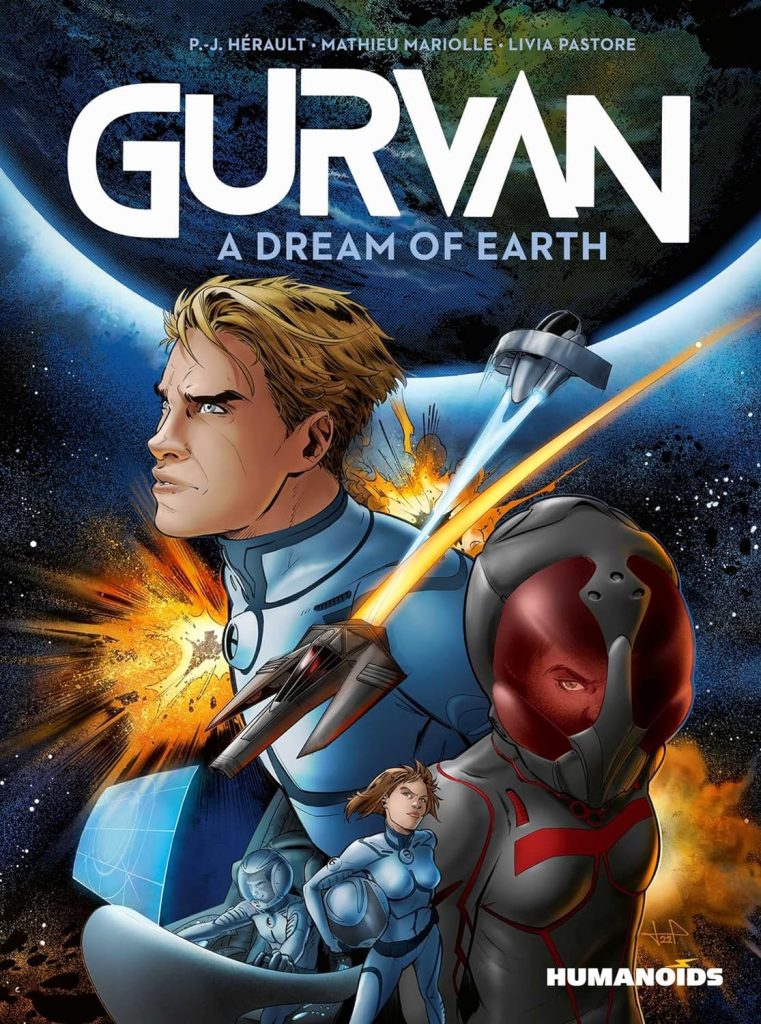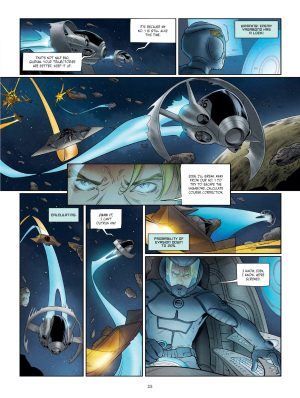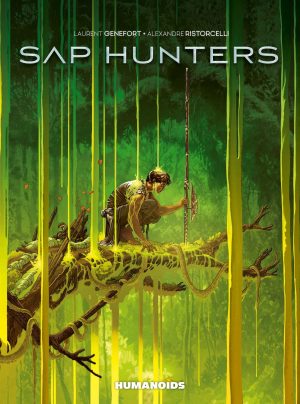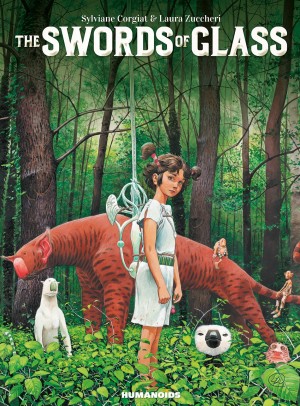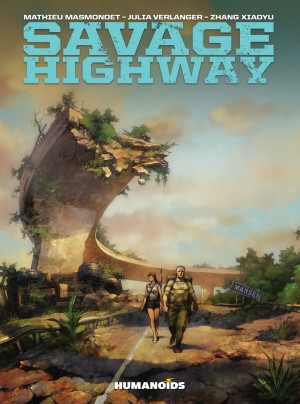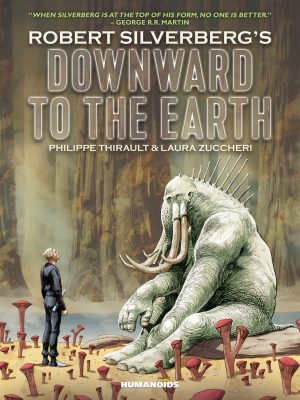Review by Ian Keogh
It seems far more likely that a graphic novel edition of a French science fiction novel will manifest than adaptations of works in English, and the 21st century has seen a considerable number appear in translation, usually via Humanoids. Gurvan is another, named after its protagonist, first seen as a cadet training to be a combat pilot. Despite his genes having been crossmatched to generate a speciality pilot, his tests are patchy, and he has a wide-eyed wonder about life that would seem at odds with his career. His primary personal aim is to rediscover Earth, a planet now lost and legendary despite producing a race that’s spread across the universe.
There must be a considerable density to P. J. Hérault’s original novel, as Mathieu Mariolle packs in the explanatory conversations at the start. However, much background information is needed for when Gurvan heads out on his first mission against an enemy, after which the surprises begin to drop. His life has been regimented by certainties, and more and more of them are challenged by the evidence of his eyes.
European artists seem to arrive fully formed and just five years into her career you’d imagine Livia Pastore was a veteran. Her space scenes have a smoothness to them, the storytelling is exemplary, the cast have room to breathe and her locations are fully realised, although the expressions on her people are generic rather than possessing emotional strength. However, she puts in so much effort overall, it’s a small price to pay. The colouring is by Hugo S. Facio who chooses to limit his palette, and scenes of space battles primarily in blue, grey and white are a distinctive novelty.
Gurvan’s approaching a crisis of conscience about information he’s discovered when circumstances move beyond his control. He’s already proved a viable maverick whose departures from normal procedures produce results, and as such is a more sympathetic figure than the soldier following orders. Readers will figure where the overall plot is heading, and the message that peace can only come with understanding and co-operation is embedded from the start, but there’s an adventurous ebb and flow to events, emotional tension, and considerable suspense over the final pages. The ending is unpredictable and inventive, leaving the way open for a sequel that Hérault duly provided.
